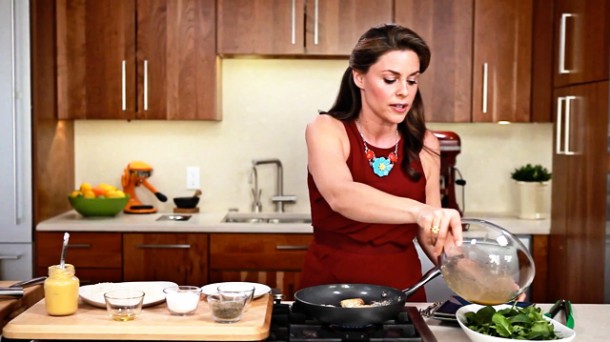
“Eat Less With These 6 Foods!”
I’m sure you’ve seen this statement, along with the “One Food To Lose Belly Fat” — but there are substantial studies that show that eating certain foods definitely affects satiety and how hungry you are throughout the day.
This is seriously good news because when you can control hunger, it’s easy to slash hundreds of calories.
When you’re able to gradually decrease calories every week, tipping the scale in your favor without even trying or feeling deprived makes weight loss effortless!
Some of the weight loss foods that bring on the “full factor” might surprise you because they are so delicious and easy to prepare — so just follow these simple drool-worthy guidelines and enjoy them in the correct quantities.
Eggs
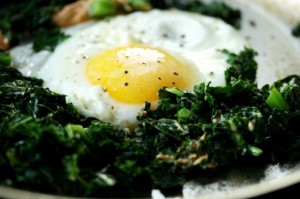 For years, eggs got a bad rap because health professionals believed that egg yolks, high in dietary cholesterol, raises blood serum cholesterol — which is just not true according to this thorough Harvard study.
For years, eggs got a bad rap because health professionals believed that egg yolks, high in dietary cholesterol, raises blood serum cholesterol — which is just not true according to this thorough Harvard study.
Eggs in moderation (1 or 2 a day), preferably pasture-raised, not only give you vital B12 to calm your nervous system and plenty of choline that fights depression, but they also help keep you feeling full much longer than other forms of protein — because of the way that eggs interact with the hunger hormone ghrelin.
Whey Protein
Whey protein, derived from milk, is another ingredient that ranks highest when it comes to “fullness factor”, which is one of the main components in protein powders used for shakes and smoothies.
Studies on whey protein also say that it may have the ability to decrease adipose tissue, in other words the fat deposits around the stomach or arms — because whey, like eggs, is high in amino acid content.
When picking whey protein powder, look for low-carb options (under 5 net grams per scoop which usually measures 1/3 cup) and powders that do not contain artificial sweeteners or colorings. Plain or vanilla work well in shakes, and are easy to flavor with naturally healthy ingredients like fresh berries, vanilla and almond extract, nuts, nut butters, or fresh mint.
Nuts
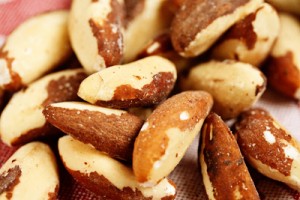 Nuts are not only incredibly delicious and rich tasting, they are a gourmet cook’s dream — but they are full of good quality fats that trigger the hormone ghrelin, produced in the stomach to signal your brain that you are full and satisfied.
Nuts are not only incredibly delicious and rich tasting, they are a gourmet cook’s dream — but they are full of good quality fats that trigger the hormone ghrelin, produced in the stomach to signal your brain that you are full and satisfied.
These fats are also anti-inflammatory which means as they fill you up they also work to sooth your system, fighting inflammation that is at the root of many diseases like heart disease, cancer, and arthritis. You don’t have to be afraid to fall in love with nuts, just don’t go nuts on the portion size since fat has the highest calorie density (9 calories/gram fat). So for a 100-calorie snack, count out about 12 almonds, 10 hazelnuts, 4 macadamia nuts, or 2 Brazil nuts.
Keep in mind when you’re cooking with nuts or adding them to a recipe that most recipes contain other fat sources — so keep an eye on the portion size of other fatty ingredients such as cheese, oils, avocado, and scale back accordingly.
Spicy Chilies
Chilies are a personal favorite of mine because they provide a spark of flavor and a flash of heat to foods that would otherwise be bland.
Eating spicy, hot flavorful food can also help you to feel full without eating large portions, because capsaicin, the active “hot” ingredient in chilies can help you to feel full in two ways:
They have the ability to create satiety in two way — orally (in your mouth) and gastrointestinally (in your stomach). They also have the added bonus of a reduced calorie and fat intake in the short term.
Chilies are a champion superfood because they are extremely low in calories, fat-free, salt-free and sugar-free, and they are a good source of vitamins A, C, and E, folate and potassium.
Capsaicin has been studied for its ability to stimulate circulation, fight certain forms of cancer, calm inflammation and ease the pain of arthritis.
The best way to incorporate chilies into your diet is to go fresh and use them in healthy, home-cooked meals. Try my shrimp with spicy mayo, Hell’s Kitchen chili, or my tasty line of low-sodium gourmet cooking sauces that each feature of different spicy chili.
Lower Carb, Fiber Rich Foods
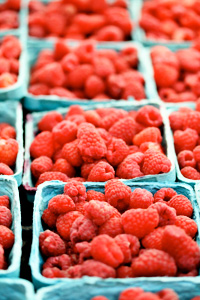 There is no doubt that fiber-rich foods like artichokes, berries, apples, and broccoli can help you to feel full and eat less for many reasons.
There is no doubt that fiber-rich foods like artichokes, berries, apples, and broccoli can help you to feel full and eat less for many reasons.
Fiber slows the uptake of nutrients into your blood stream which means less spikes in blood sugar levels that can trigger wicked cravings. Soluble fiber swells when it meets liquid in our digestive system, creating a physical feeling of fullness.
Lower-carb foods that contain fiber are better at controlling hunger since they don’t raise blood sugar as much compared to higher-carb options that also contain some fiber — like oats and other whole grains.
How does this look on your plate? Per cup, cooked whole grains contain triple the calories, triple the carbs and half the amount of fiber. That said, you should still incorporate whole grains into your diet in the correct amounts, and top them with high-fiber fruits and vegetables.
Probiotic Foods and Probiotic Supplements
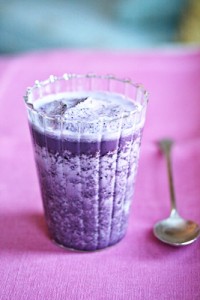 A complex system of microbes, called the microbiome, inhabits your large intestines.
A complex system of microbes, called the microbiome, inhabits your large intestines.
The microbiome is made up of good and potentially harmful bacteria that literally fight an ongoing war, as explained in this fascinating documentary called “Microwarriors”. The microbial balance can have a big effect on your appetite if the balance swings in the wrong direction and it’s not just your digestion that’s at risk:
The microbiome determines the strength of your immune system, how many nutrients you’ll be able to process, and even how you cope with allergens. Stress, poor diet, lack of sleep, eating high doses of sugary foods and poor quality fats, drinking too much alcohol can all tip the balance in favor of the “bad bugs”.
The bad bugs crave sugary sweets, white processed carbs, and even alcohol which can all throw your blood sugar out of whack and bring on mean cravings, causing you to eat many unnecessary calories throughout the day.
So give the good guys a fighting chance and include plenty of low-sugar, probiotic foods in your diet like plain kefir, sauerkraut, and plain yogurt. Some doctors believe that certain probiotic cultures may even help to naturally calm hunger beyond just crowding out bad bacteria that mess with your “fullness factor”.
Coffee and Tea?
Coffee and tea have long been touted for their abilities to naturally calm appetite but many studies don’t support it because they say that both hunger hormones and blood sugar remain unchanged after consumption.
There is still conflicting research on the topic, but personally I definitely feel fuller: my stomach does in the short term when I enjoy a hot cup of joe or freshly brewed green tea so I’m including them in this post.
Apparently, green tea does not quell hunger in this study because it did not help to control insulin, but green tea is a mighty rich antioxidant drink to be included as one of the healthiest beverages out there!
Another study on decaf coffee claimed to keep hunger at bay but keep in mind that decaf contains none of the stellar array of antioxidants of its caffeinated counterpart.
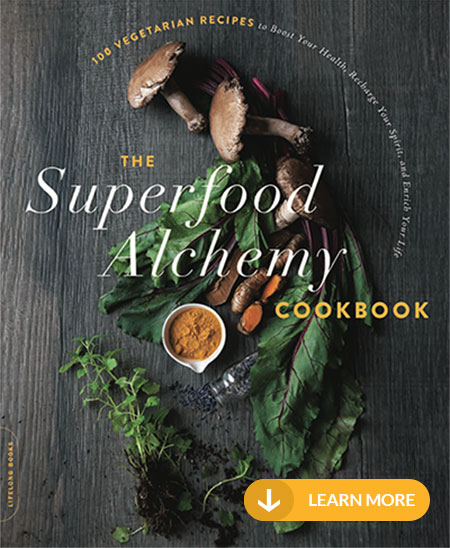

 Are you ready to look better, feel more energized, and get back that youthful feeling you remember having as a kid? I can help you on a journey that will change the way you eat — for good. My
Are you ready to look better, feel more energized, and get back that youthful feeling you remember having as a kid? I can help you on a journey that will change the way you eat — for good. My 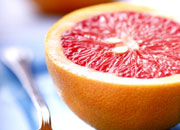


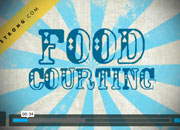
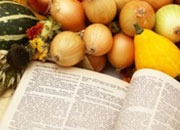







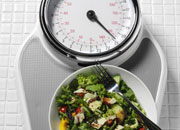


 As a healthy cooking expert, health coach and TV host,
As a healthy cooking expert, health coach and TV host, 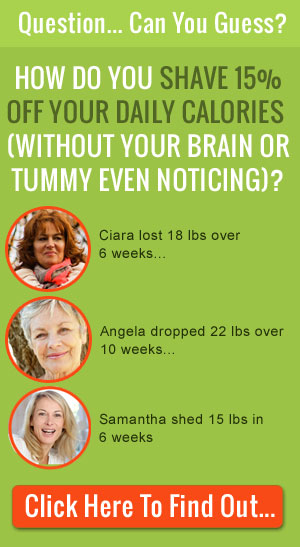

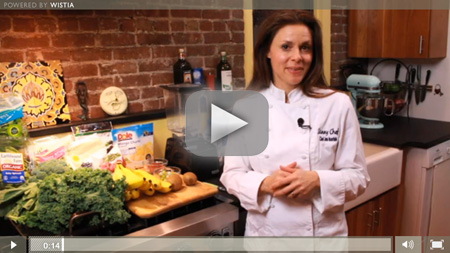
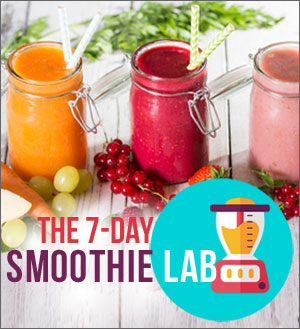
Speak Your Mind